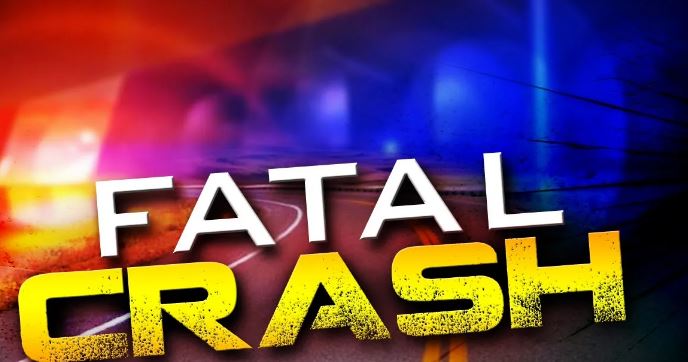Local elected officials from Northern & Western Arizona share infrastructure challenges — regrets the widening economic disparity between urban and rural Arizona

PHOENIX – The Arizona House of Representatives Transportation Committee received briefings on Wednesday from representatives from Camp Verde, Cottonwood, Kingman, and Yuma joined by County Supervisors from Apache, Coconino, La Paz, Mohave, Navajo, Yavapai, and Yuma Counties. The testimony from rural representatives laid bare the dismal state of local roads and the immense toll that deferred maintenance has on rural Arizona’s ability to compete for new jobs and economic development opportunities – furthering the urban rural divide that plagues much of the America today and American politics in general.
While depicting the massive needs of his community, Apache County Supervisor Alton Joe Shepherd revealed that his county’s needs funding gap grows by $1.2B each year. He goes on to state that the
“Lack of funding available and the need to prioritize preserving existing road systems has put a moratorium on any expansion.”
Coconino County Supervisor Matt Ryan’s presentation exhibited the harsh impacts of seasonal weather, coupled with the wear and tear of nearly 20 million tourists on their local roadways.
“The roadways in Coconino county are in desperate need of attention to meet the needs for travelers. We’ve been called the ‘Gateway to the Grand Canyon’ but it’s a pr
etty poor gateway.”
He goes on to highlight the heavily trafficked roadways that are suffering from lack of investment calling them a “rough and tough ride for international visitors and tourists.”
Representative Thorpe followed Supervisor Ryan’s presentation confirming the negative effects that poorly maintained roadways can have on Northern Arizona’s tourism and went on to address the issue of public safety.
“…those folks that live above upper Sedona if we have any kind of emergencies that require emergency vehicles it’s pretty much impossible there is no route.”
Traffic fatalities on Arizona’s rural roads is the 3rd highest in the nation and more than 2x the fatality rate on all other roads in the state.
Navajo County Supervisor Dawnafe Whitesinger describes the safety challenges her community is facing because of an unmaintained thoroughfare.
“There’s only one way in and that road is deteriorating every single day. There’s only so much patchwork you can do. What happens on the day that road closes? How will community members be able to get in and out to provide for their families or get public safety or whatever basic needs need to be met?”
Navajo County Supervisor, Daryl Seymore stated in his presentation that
“It doesn’t matter to build new stuff if we can’t take care of what we already have. We need to have some type of sustainable fund that will be ongoing, not just a short fix.”
He emphasized the importance of finding a sustainable and ongoing solution to the shortfalls of current revenues. To represent the negative cycle that can be created by insufficient and unsafe roads Mayor Seymore displayed a troubling image of a school bus stuck in the mud on the side of a deteriorating road in Show Low. Stating the obvious threats like safety, also highlighting some of the less obvious side effects like the inability for the children on that bus to reach their full potential because they can’t get to school. Or the inevitable taxpayer burden when schools seek budget increases to replace those damaged buses.
La Paz County Supervisor Duce Minor shared that the number one complaint he receives is about the roads in his county. Confirming that;
“61% of roads are in poor or very poor condition.”
Perhaps one of the most shocking images in Supervisor Minor’s presentation was the image of the once beautiful Riverside Road that runs along the Colorado River presented side by side with the current conditions of that road which is closed due to lack of funding for the necessary shoulders to prevent rockslides onto the roadway. The pavement construction for this project alone are upwards of $2M, and that cost does not include the vital safety upgrades.
Mohave County Supervisor Jean Bishop estimates that their infrastructure projects would require a lofty $58M. She went on to say;
“Were focused on motorist safety and asset preservation. Our need is fair and reasonable in servicing the public welfare and overall quality of life. Let alone sustaining our incredible tourism industry and commercial opportunities.”
Yavapai County Supervisor Craig Brown shared the county’s findings from their long-range regional transportation plan study, finding that there are 60 important safety and capacity projects that need to be addressed totaling over $1B.
“$1B is more than all of our budgets combined for about 5 years.” He went on to announce that with current funding models it would take “1600 years to complete all 60 of those projects.”
He concluded by stating that the need for Arizona’s leaders to find a solution is imminent, recalling how originally 20 years ago the gas tax wasn’t popular but necessary.
Following Supervisor Brown’s presentation Vice Chairman Biasiucci added;
“We’re dealing with an issue where the Governor has stated he won’t support any kind of gas tax. The cars that use the highways that are fully electric they need to start paying their fair share. We’re looking at cars that get better miles per gallon, so they’re using less gas and you have electric vehicles that are using no gas. What is the solution? Something needs to be done.”
Following Biasiucci’s comments Representative Noel Campbell said;
“The Governor said he would not support any tax increase. I think if we put a revenue bill on his desk and said we have worked hard to fund this for the state and safety, maintenance… I don’t think he would do it.”
Yuma County Supervisor Russell McCloud identified the county’s number one priority project as US HWY95 due to its significant impact on Arizona’s economy. This stretch of highway serves as a major transit corridor serving travelers coming from Mexico that represent $23M in monthly economic activity. His presentation showcased the $10.5M in deferred maintenance that accounts for 80% of the county’s HURF funds.
The Mayor of Cottonwood Tim Elinski was thrilled to share the uptick in recent growth and economic development in Cottonwood, calling it the “heart of Arizona wine country.” He countered that excitement with worry, citing the embarrassment his community experiences when welcoming tourists to their town via damaged and unkept roads.
“Insufficient funding levels have left 65% of Kingman’s network of streets in poor or very poor condition.” said Vice Mayor of Kingman Travis Lingenfelter. He went on to disclose even more astonishing findings.
“Over 50% of local roads have less than 5 year estimated service life. Every $100,000 in deferred maintenance increases to between $600,000 to $1.4M in needed rehabilitation or construction in the future. We currently in the city of Kingman have a backlog of deferred maintenance of $60M.”
Following Vice Mayor Lingenfelter shocking findings, Yuma Councilmember Gary Knight shared that Yuma had 40 miles of failed roads in 2018, and by 2022 that number would rise to 128 miles.
“$8 million annually in rehabilitation is required just to maintain the current status, that’s not to fix any of the failed roads, just maintain current status…”
To address the current status of those failed roads it would cost around $13M annually.
Mayor Charles German from the Town of Camp Verde concluded;
“We all know that since 1991 when the gasoline tax passed, the purchasing power derived there from has dropped more than 70%. The advent of improved vehicle technology and efficiency as well as the advent of electric vehicles has put new stresses to find a solution. Good streets and roadways is a goal we all have.”











